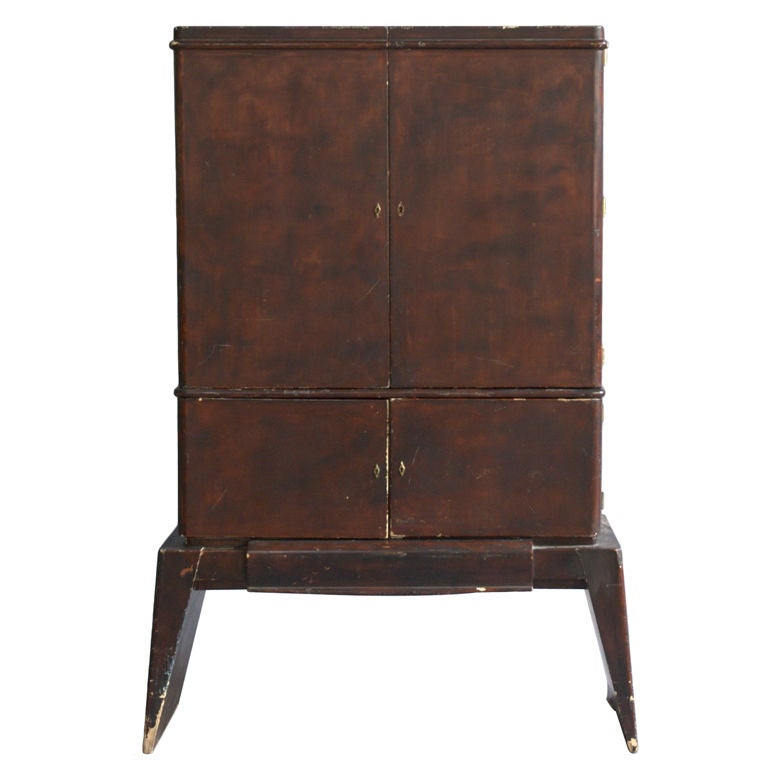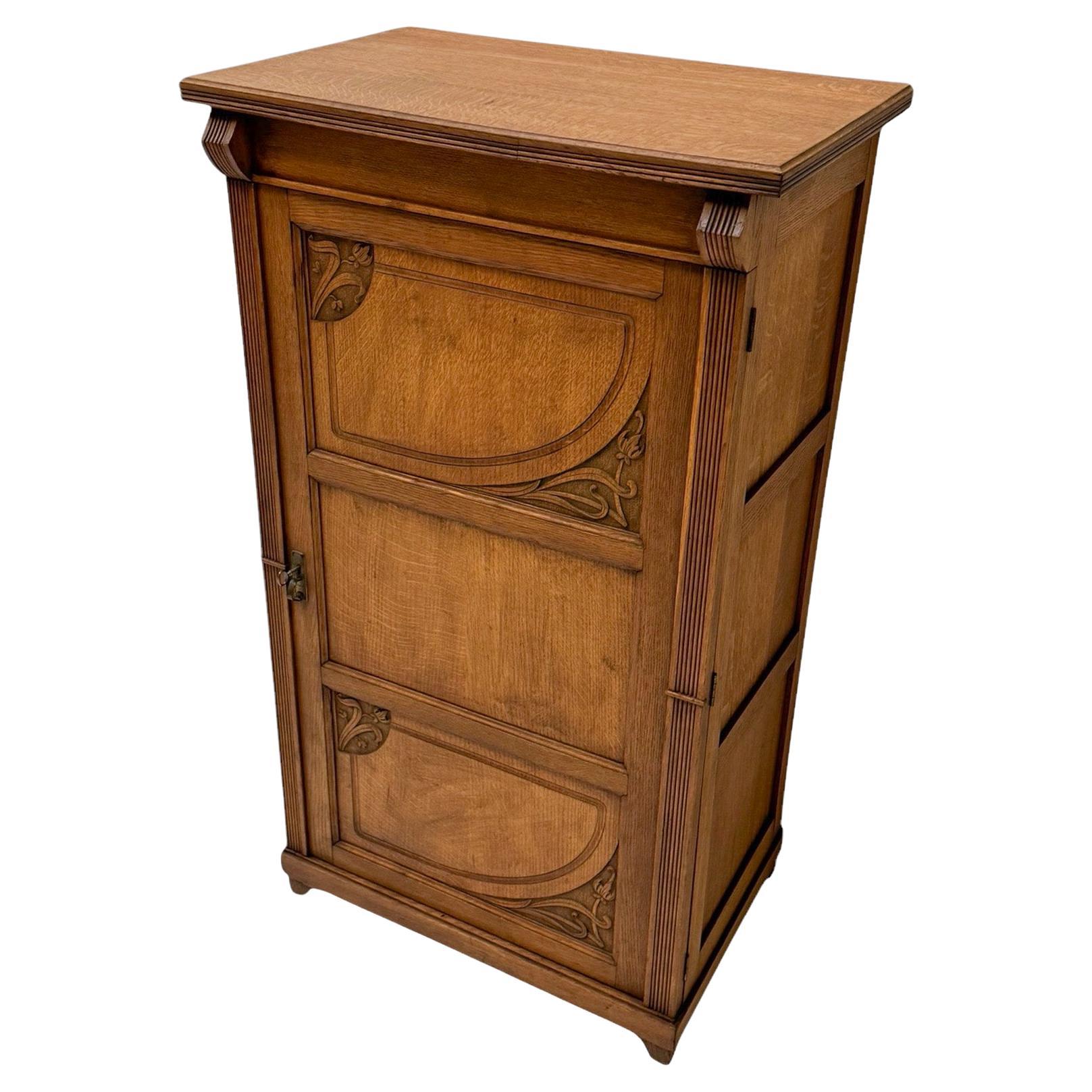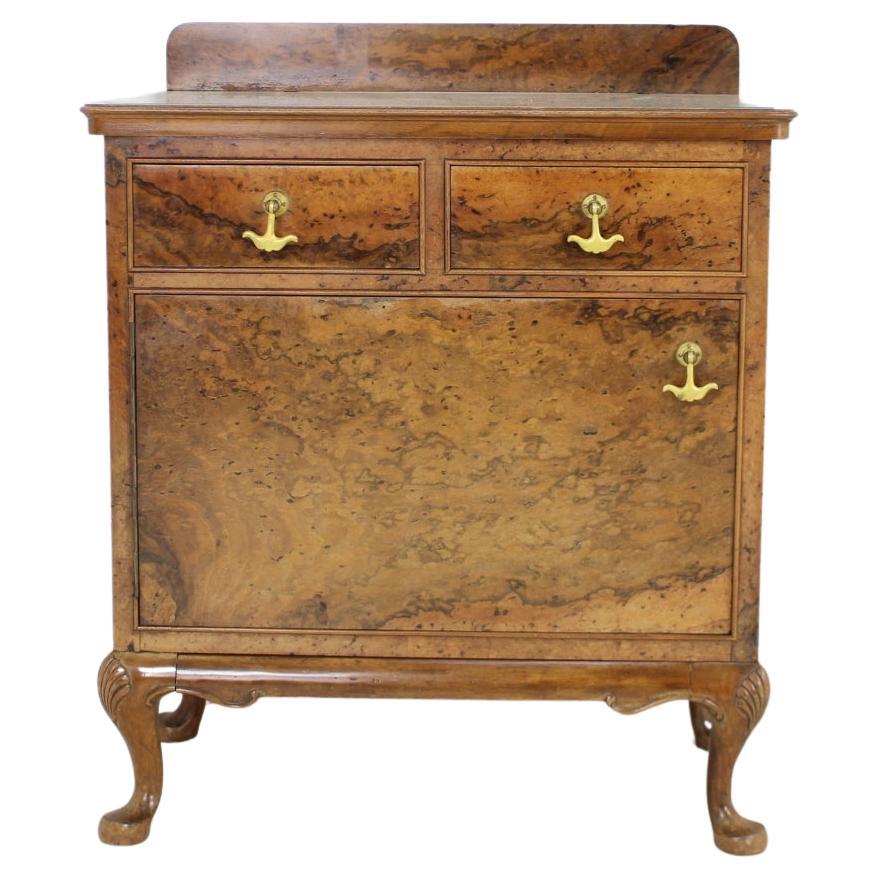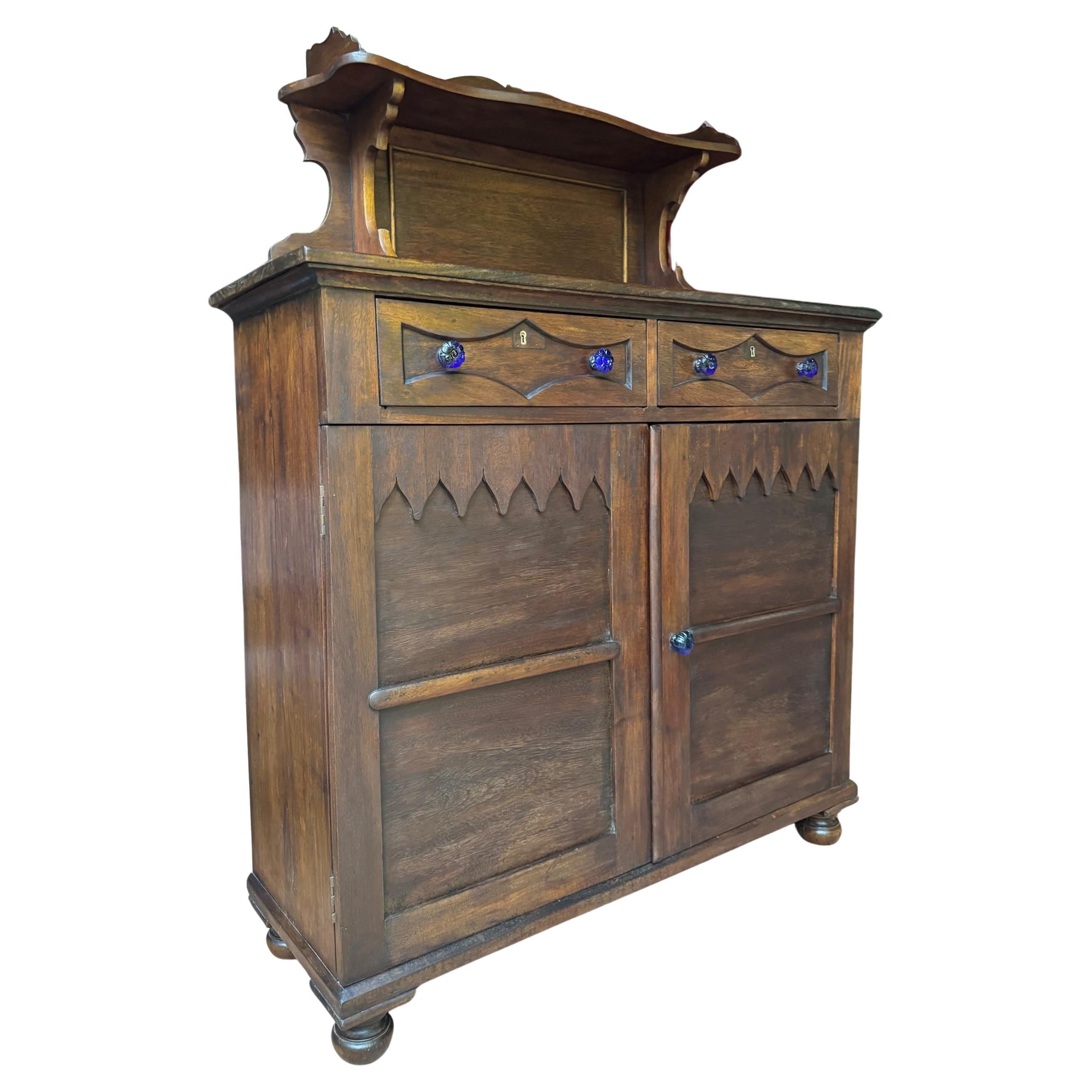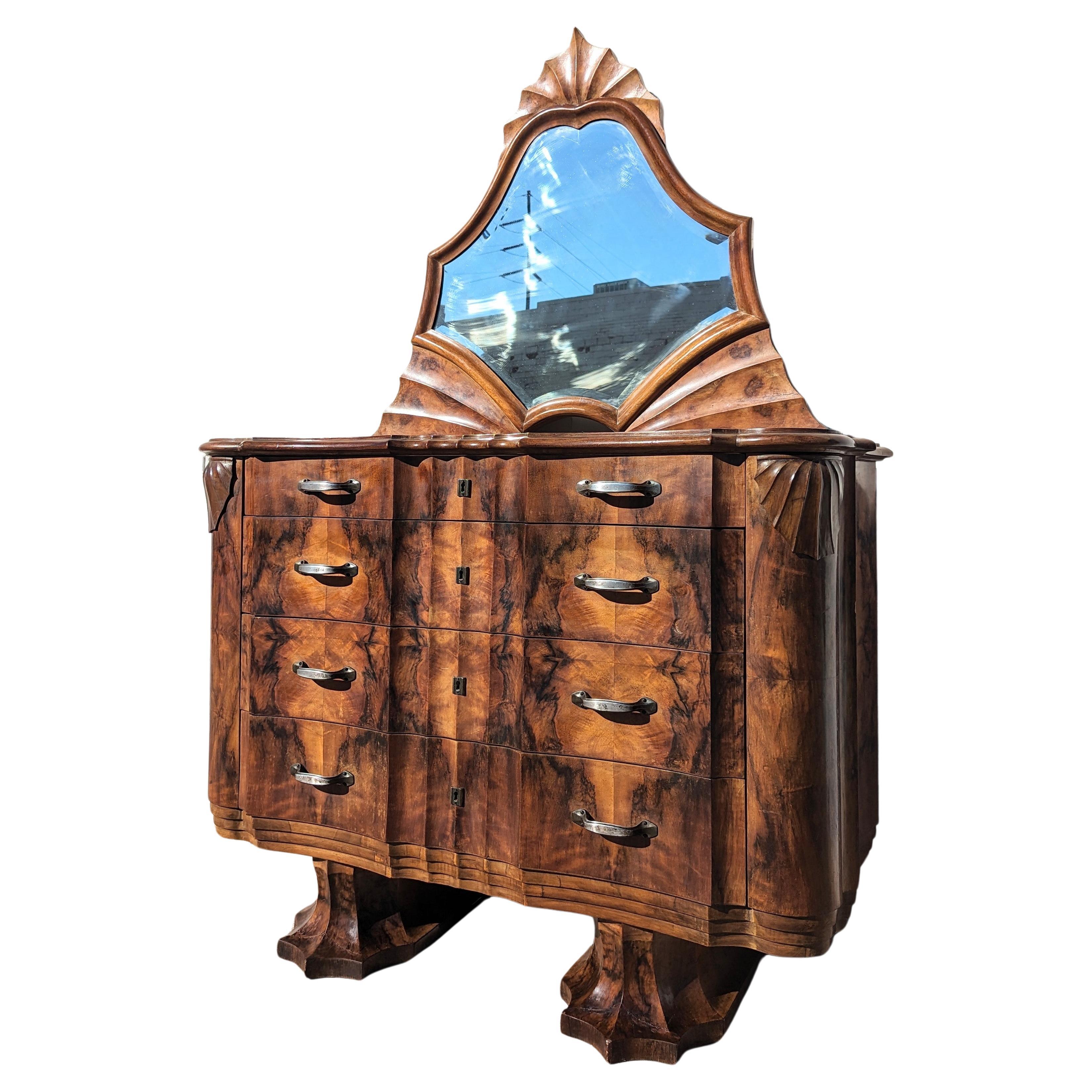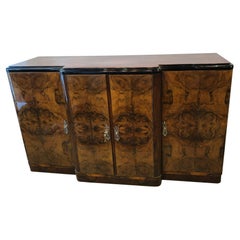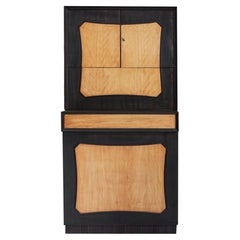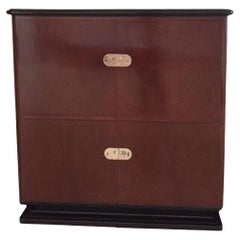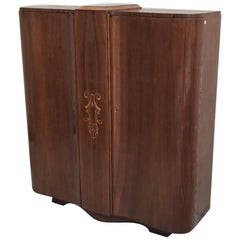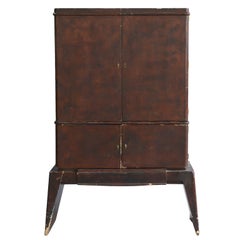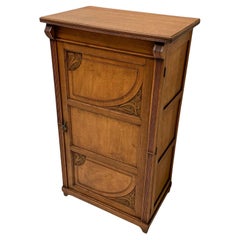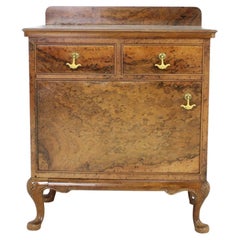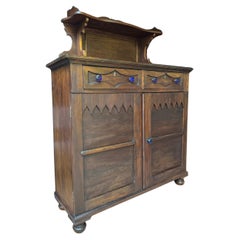Items Similar to Bar in Wood, Style, Jugendstil, 1900-1910
Video Loading
Want more images or videos?
Request additional images or videos from the seller
1 of 22
Bar in Wood, Style, Jugendstil, 1900-1910
$20,000
$25,00020% Off
£15,081.99
£18,852.4820% Off
€17,443.04
€21,803.8020% Off
CA$28,059.89
CA$35,074.8720% Off
A$31,190.31
A$38,987.8920% Off
CHF 16,349.29
CHF 20,436.6220% Off
MX$380,909.21
MX$476,136.5120% Off
NOK 204,111.51
NOK 255,139.3820% Off
SEK 192,030.85
SEK 240,038.5620% Off
DKK 130,189.78
DKK 162,737.2320% Off
About the Item
Amaizing Cabinet
If you want to live in the golden years, this is the bar that your project needs.
We have specialized in the sale of Art Deco, Jugendstil, and Art Nouveau styles since 1982.If you have any questions we are at your disposal.
Pushing the button that reads 'View All From Seller'. And you can see more objects to the style for sale.
Why are there so many antiques in Argentina?
In the 1880 – 1940 there was a grate wave of immigration encouraged by the periods of war that were taking place.
1st World War took place between 1914 and 1918
2nd World War took place between 1939 and 1945
The immigrants options were New York or Buenos Aires. Tickets were cheap and in Buenos Aires they were welcomed with open arms, as it was a country where everything was still to be done.
Argentina was the country of new opportunities, labour was needed and religious freedom was assured, in many cases the of the family travel first until they were settled and then the rest of the family members join them.
In the immigrant museum “Ellis Island Immigrant Building” in New York you can se the promotional posters of the boats that would take them to a new life.
Between the years 1895 and 1896, Argentina had the highest DGP (gross domestic product) per capita in the world according to the Maddison Historical Statistics index, this situation arose due to the large amount of food being exported to European countries, which were at war.
The Argentinean ships left the port of Buenos Aires with food, but they returned with furniture, clothes and construction elements, (it´s common to see this the old buildings of the historic neighbourhood of San Telmo, the beams with the inscription “Made in England)”, as well as many markets that were built in Buenos Aires, such us the San Telmo Market, whose structure was brought by ship and afterwards assembled in 900 Defensa Street.
With the great influence of European immigrants living in the country, the children of the upper classes travelled to study in France, resulting in the inauguration of “La Maison Argentinienne”, on 27th of June 1928, in the international city of Paris, which hosted many Argentinians that were studying in Frace.
It´s the fourth house to be built after France, Canada and Belgium, being the first Spanish-speaking one. Still in place today (17 Bd Jourdan, 75014, Paris, France). Many of the children of these wealthy families who attended international art exhibitions, museums and art courses abroad, took a keen interest in the European style. This is why Buenos Aires was at the time referred as “The Paris of South America”.
Between the years 1890 and 1920 more than a hundred Palaces were built on Alvear Avenue the most exclusive avenue in Buenos Aires. Today some of these palaces have been transformed into museums, hotels and embassies.
In the year 1936, the Kavanagh building was inaugurated, it was the tallest reinforced concrete building in South America.
During 1994 the American Society of Civil Engineers distinguished it as an “international engineering milestone”, and it´s now considered a World Heritage of Modern Architecture.
At the time was common to hire foreign architects such as Le Corbusier, who visited Buenos Aires/Argentina in 1929 and in 1948 he drew up the blueprints for a house built in La Plata City (which was declared a World Heritage Site).
In 1947, the Hungarian architect Marcelo Breuer designed “Parador Ariston” in the seaside city of Mar del Plata. After an Argentinean student at Harvard University convinced him to come to Argentina. He worked on an urban development project in the Casa Amarilla, area of La Boca.
The Ukrainian architect, Vladimiro Acosta, arrives in Argentina in 1928 and worked as an architect until que moved to Brazil.
Antonio Bonet, a Spanish architect who worked with Le Corbusier in Paris, arrives in Argentina in 1937, where he carried out several architectural works and in 1938 designs the well-known BFK chair.
Andres Kálnay, of Hungarian origin, made around 120 architectural masterpieces, among which the former Munich brewery stands out, he even made the furniture’s design.
The German architect, Walter Gropius, director of the Bauhaus, lived in Argentina, where he wrote articles for “Sur” magazine and founded in Buenos Aires, an architectural firm with Franz Möller, who was also an architect, where he built two houses.
At the same time several famous designers decided to immigrate to Argentina, among them we can find the well-known French designer, Jean-Michel Frank, who arrived in the country in 1940 and also worked for the Rockefeller family.
Special pieces were made, which were sold exclusively in the country, such as the well-known German company “WMF”, who sold their products by catalogue, which were chosen by the ladies of high society in the list of wedding gifts, as well as the pieces designed by Christofle.
The Swiss sculptor Alberto Giacometti, made special pieces for Argentinean mansions.
In 1904 the first Jansen branch outside Paris was established in Buenos Aires, as the Argentinean clientele demanded a large amount of furniture, from the end of the 19th century to the mid-20th century.
In 1970, the brand Rigolleau Argentina made pieces authorised by Lalique.
The brands Maple and Thompson also set up shop in the country.
The French plastic artist, Marcel Duchamp moved to Argentina in 1918-1919.
Glass signed Gallé, Charder, Leverre, Schneider, Muller and other French firms. They were bought in flower shops and were given to ladies with beautiful floral arrangements.
Some furniture manufacturers travelled to international fairs and bough the patterns to produce the furniture in Argentina, such as the furniture firm Englander and Bonta, who bought the patterns ins Italy.
It is worth mentioning that in Argentina we have the largest community of Italians outside of Italy, as it is estimated that 70 percent of the inhabitants have at least one Italian descendant, followed by Spanish immigrants.
The most Important furniture stores in Argentina:
Comte is founded in 1934 (under the direct management of Jean Michel Frank in 1940).
Nordiska (Swedish company established in 1934).
Churba in 1960, a company that brought foreign designers to present their furniture in the country:
Denmark: (Arne Jacobsen, Finn Juhl, Bender Madsen, Ejner Larsen, Poul Kjaerholm, Hans Wegner)
Sweden: (Hans Agne Jakobsson, Gustavsberg)
United States: (Herman Miller)
Finland: (Lisa Johansson, Folke Arstrom, Tapio Wirkkala, Alvar Aalto, Timo Sarpaneva)
Swedish Factory: (Orrefors)
Italy: (Littala, Vico Magistretti, Emma Gismondi, Gae Aulenti, Angelo Mangiarotti, Elio Martinelli, Gianna Celada, Angelo Mangiarotti, Mario Bellini, Carlo Scarpa)
Finland: (Olivia Toikka)
Plata Lappas (Lappas Silver): a goldsmith shop founded in 1887 in Argentina by Alcibiades Lappas of Greek origin.
In 2019, in Argentina took place “the Art Deco world congress”, in which we participated as hosts invited by Geo Darder, founder of the Copperbridge – Foundation, in which prominent people from all over the world attended to learn about Art Deco in Argentina.
Argentina currently has more than 100 Art Deco buildings and another 90 Art Nouveau buildings throughout the city of Buenos Aires.
Argentina is a country that has not been involved in many wars, which is why it has been a refuge for works of art and antiques from different periods of time, unlike European countries. That is way many collectors, museums and antique dealers from all over the world visit it, you should not miss the opportunity to visit this great country.
Laura Guevara Kjuder, architect.
- Dimensions:Height: 65.36 in (166 cm)Width: 33.67 in (85.5 cm)Depth: 16.46 in (41.8 cm)
- Style:Jugendstil (Of the Period)
- Materials and Techniques:
- Place of Origin:
- Period:1900-1909
- Date of Manufacture:Circa Early 1900
- Condition:Refinished. Wear consistent with age and use.
- Seller Location:Ciudad Autónoma Buenos Aires, AR
- Reference Number:Seller: F-TO-121stDibs: LU6785237666392
About the Seller
5.0
Vetted Professional Seller
Every seller passes strict standards for authenticity and reliability
Established in 1982
1stDibs seller since 2022
37 sales on 1stDibs
Typical response time: <1 hour
- ShippingRetrieving quote...Shipping from: Ciudad Autónoma Buenos Aires, Argentina
- Return Policy
Authenticity Guarantee
In the unlikely event there’s an issue with an item’s authenticity, contact us within 1 year for a full refund. DetailsMoney-Back Guarantee
If your item is not as described, is damaged in transit, or does not arrive, contact us within 7 days for a full refund. Details24-Hour Cancellation
You have a 24-hour grace period in which to reconsider your purchase, with no questions asked.Vetted Professional Sellers
Our world-class sellers must adhere to strict standards for service and quality, maintaining the integrity of our listings.Price-Match Guarantee
If you find that a seller listed the same item for a lower price elsewhere, we’ll match it.Trusted Global Delivery
Our best-in-class carrier network provides specialized shipping options worldwide, including custom delivery.More From This Seller
View AllBuffet Art Deco in Wood with Drawers, France 1930
Located in Ciudad Autónoma Buenos Aires, C
Buffet Art Deco
Material: wood
Style: Art Deco
Country: France
If you want to live in the golden years, this is the buffets that your project needs.
We have specialized in the sale...
Category
Vintage 1920s French Art Deco Buffets
Materials
Wood, Walnut
Bar in Wood, Style, Art Deco, France, 1930
Located in Ciudad Autónoma Buenos Aires, C
Amaizing bar
Style: Art Deco
If you want to live in the golden years, this is the bar that your project needs.
We have specialized in the sale of Art Deco and Art Nouveau styles si...
Category
Vintage 1930s French Art Deco Carts and Bar Carts
Materials
Wood, Paper
Art Deco Furniture, 1920, French, walnut wood and bronze
Located in Ciudad Autónoma Buenos Aires, C
Country: French
Wood
It is an elegant and sophisticated bookcase.
You want to live in the golden years, this is the bookcase that your project needs.
We have specialized in the sale...
Category
Vintage 1920s French Art Deco Bookcases
Materials
Bronze
Art Deco Furniture, 1930, French, Material, Woods: Walnut and birch
Located in Ciudad Autónoma Buenos Aires, C
Bookcase Art Deco
Year: 1930
Country: French
Wood
Finish: polyurethanic lacquer
It is an elegant and sophisticated bookcase.
You want to live in the golden years, this is the bookc...
Category
Vintage 1930s French Art Deco Bookcases
Materials
Wood
Furniture Style, Art Deco in Wood and Glass, France, 1920
Located in Ciudad Autónoma Buenos Aires, C
Furniture Art Deco
Material: wood, mirror and glass
Style: Art Deco
Country: France
We have specialized in the sale of Art Deco and Art Nouveau styles since 1982.
Art. Deco
...
Category
Vintage 1920s French Art Deco Bookcases
Materials
Glass, Wood, Mirror
Art Deco Bookcase in Wood, 1920, French
Located in Ciudad Autónoma Buenos Aires, C
Bookcase
Year: 1920
Country: French
Wood
It is an elegant and sophisticated bookcase.
You want to live in the golden years, this is the bookcase that your project needs.
We have s...
Category
Vintage 1920s French Art Deco Bookcases
Materials
Wood, Walnut
You May Also Like
A Fine French Art Deco Lacquered Bar
Located in Long Island City, NY
Rare French Art Deco 4 doors lacquered bar in the manner of Rene Prou.
Category
Vintage 1930s French Art Deco Dry Bars
Arts & Crafts Art Nouveau One-Door Cabinet, 1900s
Located in Amsterdam, NL
Stunning and elegant Arts & Crafts Art Nouveau one-door cabinet.
Design by H.P. Mutters & Zoon Den Haag.
Striking Dutch design from the 1900s.
Solid oak with original hand-carved dec...
Category
Antique Early 1900s Dutch Arts and Crafts Cabinets
Materials
Brass
1920, Antique Cabinet, Czechoslovakia
Located in Praha, CZ
- made in Czechoslovakia
- made of glass, brass, root veneer, wood and mirror
- shows signs of use
- good, original condition.
Category
Vintage 1920s Czech Art Nouveau Cabinets
Materials
Brass
Late 19th Century Brazilian Cabinet from Petrópolis
Located in Rio De Janeiro, BR
Late 19th Century Brazilian Cabinet from Petrópolis – Unique Blue Glass Pulls
Offered here is a striking Brazilian cabinet dating from the late 19th century, originating from the his...
Category
Antique 1890s Brazilian Other Cabinets
Materials
Wood
Art Nouveau Burlwood Cabinet
Located in Tulsa, OK
**Please Read Entire Description**
Please view all listing pictures on a laptop if possible. Some cell phones don’t display all listing pictures and some could be pictures relatin...
Category
Vintage 1940s Italian Art Nouveau Cabinets
Materials
Maple, Oak, Burl
Early 20th Century Antique Jacobean Style English Cabinet with Oak Construction
Located in Seattle, WA
The cabinet is in the Jacobean style, originating from early 17th-century England. It features solid oak construction with a rich, natural finish, showcasing the wood’s grain. The d...
Category
Vintage 1940s Mid-Century Modern Cabinets
Materials
Oak
More Ways To Browse
Travel Bar
New England Travel Poster
Gross Wood
Ship Old Wood
Ellis Woods
Tapio Wirkkala Wood
Spanish Wood Beam
Early American New England Furniture
Travel Cabinet
Antique Wood Hungarian
Used Clothes Storage
Antique New England Cabinet
Antique Belgian Bar
Jugendstil Antiques
Antique Wood Beams
Boat Bar
Wave Wood Cabinet
Children Cabinet
